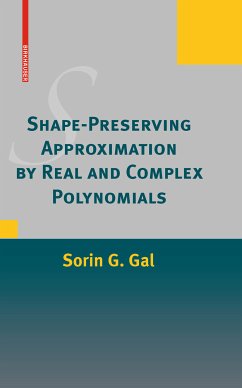The main topics are structured in four chapters, followed by an appendix: shape-preserving approximation and interpolation of real functions of one real variable by real polynomials; shape-preserving approximation of real functions of several real variables by multivariate real polynomials; shape-preserving approximation of analytic functions of one complex variable by complex polynomials in the unit disk; and shape-preserving approximation of analytic functions of several complex variables on the unit ball or the unit polydisk by polynomials of several complex variables. The appendix treats related results of non-polynomial and non-spline approximations preserving shape including those by complexified operators with applications to complex partial differential equations.
Shape-Preserving Approximation by Real and Complex Polynomials contains many open problems at the end of each chapter to stimulate future research along with a rich and updated bibliography surveying the vast literature. The text will be useful to graduate students and researchers interested in approximation theory, mathematical analysis, numerical analysis, computer aided geometric design, robotics, data fitting, chemistry, fluid mechanics, and engineering.
Dieser Download kann aus rechtlichen Gründen nur mit Rechnungsadresse in A, B, BG, CY, CZ, D, DK, EW, E, FIN, F, GR, HR, H, IRL, I, LT, L, LR, M, NL, PL, P, R, S, SLO, SK ausgeliefert werden.
"This monograph is a rich collection of existing and new results in an important part of approximation theory, in which the object of approximation and the instrument for approximation share the same shape characteristics. ... This is convenient for a reference book ... . This book is a result of hard work and deep knowledge of the subject. It is a very important reference book for experts in approximation theory and would be a worthy addition to any mathematics library." (Bl. Sendov, Mathematical Reviews, Issue 2009 m)









